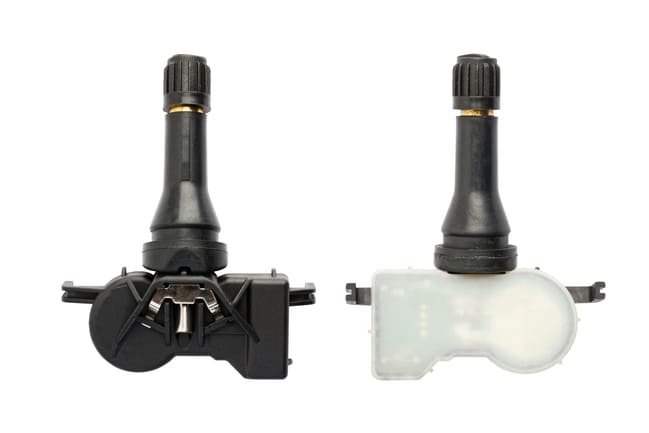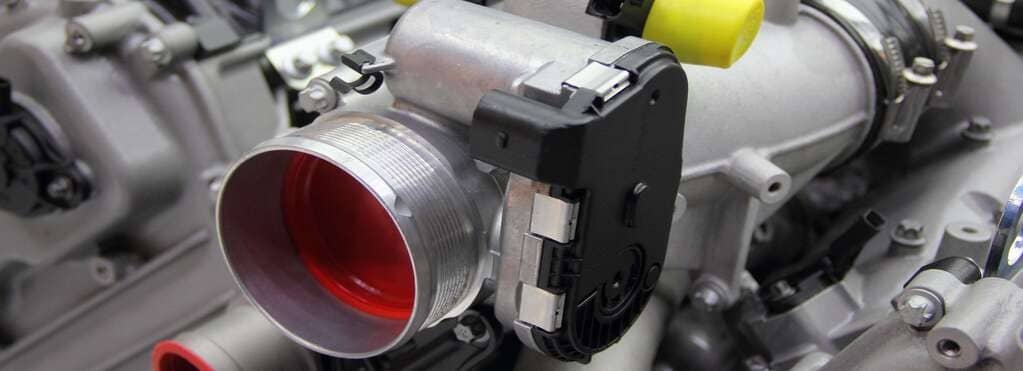
Tyre pressure sensor fault: what causes it?
Tyre pressure is a critical aspect of road safety and vehicle stability as an under- or overinflating the tyres could cause serious traction and suspension car parts problems. Not forgetting the impact it has on the tyres themselves, causing premature wear and blowouts. The tyre pressure monitoring system (TPMS) is there to detect pressure problems before damage occurs. Maintaining the sensors will help you to extend your tyres’ service life in the long term.

How does a tyre pressure sensor work?
In a TPMS, there is a tyre pressure sensor (TPS) in each tyre or wheel, designed to monitor the air pressure inside and notify the driver when the pressure is low or out of balance. When the pressure drops by around 6-7PSI (sometimes less), the TPS sends a signal to the vehicle’s onboard computer and triggers the warning light on the dashboard. This light is usually bright yellow and features an exclamation mark inside a U-shaped symbol.
There are two main types of TPMS used today: direct and indirect. In a direct monitoring system, the car tyre pressure sensors are located inside the tyre at the back of the valve where the air is added and released. Their location makes them able to track the exact pressure of each tyre, making them more accurate than indirect devices. However, they do operate using a sealed battery unit. This means that when the battery runs out, it can’t be replaced by itself.
An indirect TPMS doesn’t use tyre sensors but rather sensors located on the wheels, usually the wheel speed sensors in the anti-lock braking system. It monitors the pressure by tracking the rate of revolution of the wheel. When a tyre is underinflated, it has a smaller radius and consequently turns at a faster or irregular rate. The sensor then sends a signal to the computer which triggers the warning light. The main downside here is that the readings are less accurate and the system normally has to be reset after reinflation, tyre changes and routine tyre rotation.

Possible causes of tyre pressure fault notification
- Low tyre pressure
The first obvious culprit would be an underinflated tyre setting off the notification. First, make sure to check the tyre pressures with a pressure gauge, compare them with the manufacturer’s recommendations and adjust if necessary. If the warning light is still illuminated once the pressure is within the proper specifications, there’s most likely a fault in the TPMS.
- A worn or faulty tyre pressure sensor
This is a common cause as the batteries can fail and the devices themselves can be worn out or corrode. Performing a diagnostic scan with an OBDII scanner could help you to identify which sensor has failed. Failures usually require a replacement. You can find aftermarket spare parts by searching for your particular model, e.g. Ford tyre pressure sensor, or using the OE part number or VIN.
- Wiring issues
A wiring fault could cause a false alert, for example, if there’s inference with the sensor’s signal or a short circuit preventing the device from getting accurate readings.
- Wheel changes
If you use summer and winter tyres, it’s possible that the sensors weren’t reset properly after you swapped them over. You may also need to reprogramme the sensors if you have new car tyres fitted.
Tyre pressure sensor fault reset
Is the fault light still on after you’ve fixed it? Many models, such as Ford and Toyota models, allow you to reset the TPS light yourself by starting the car and holding the TPMS reset button until it blinks three times or by driving at 50mph for at least 10 minutes to reset the sensors.
If your tyre has a puncture or is losing air too quickly, you may need to replace it. Make sure you know the size requirements and take into account seasonal conditions before comparing car tyre offers.
TOP products on the subject:





































